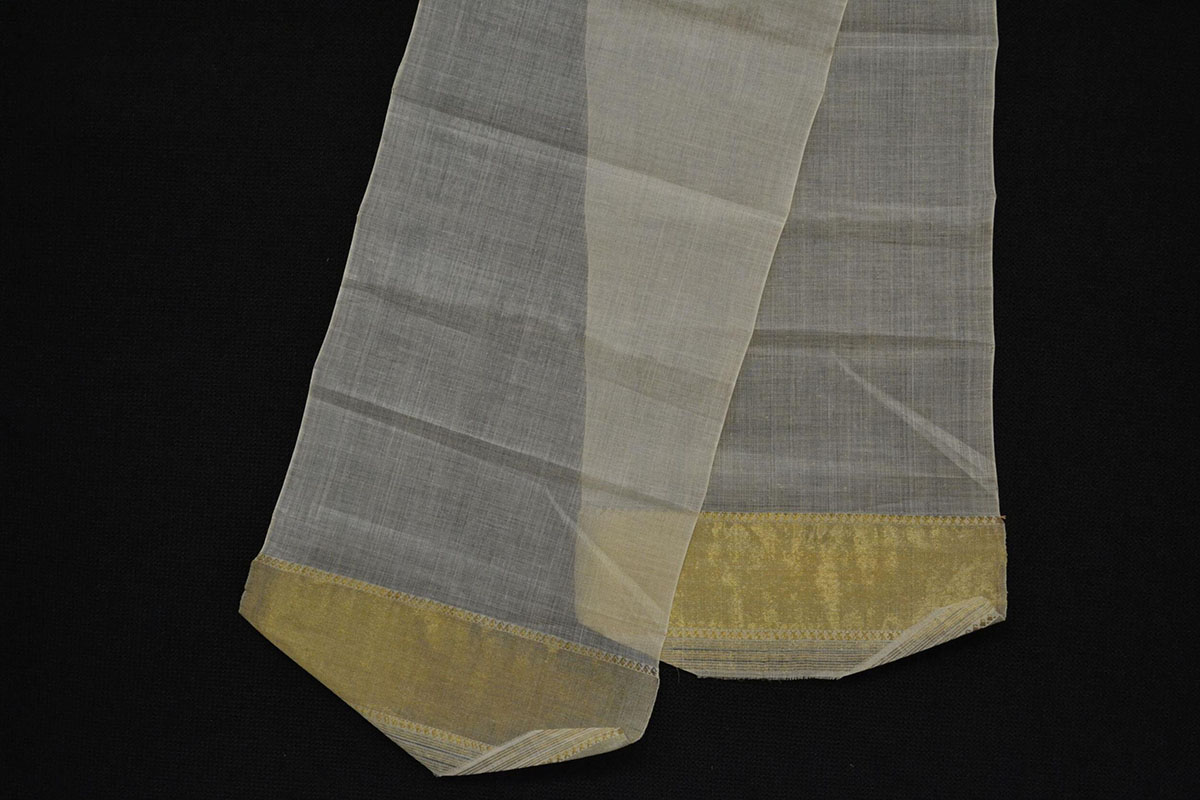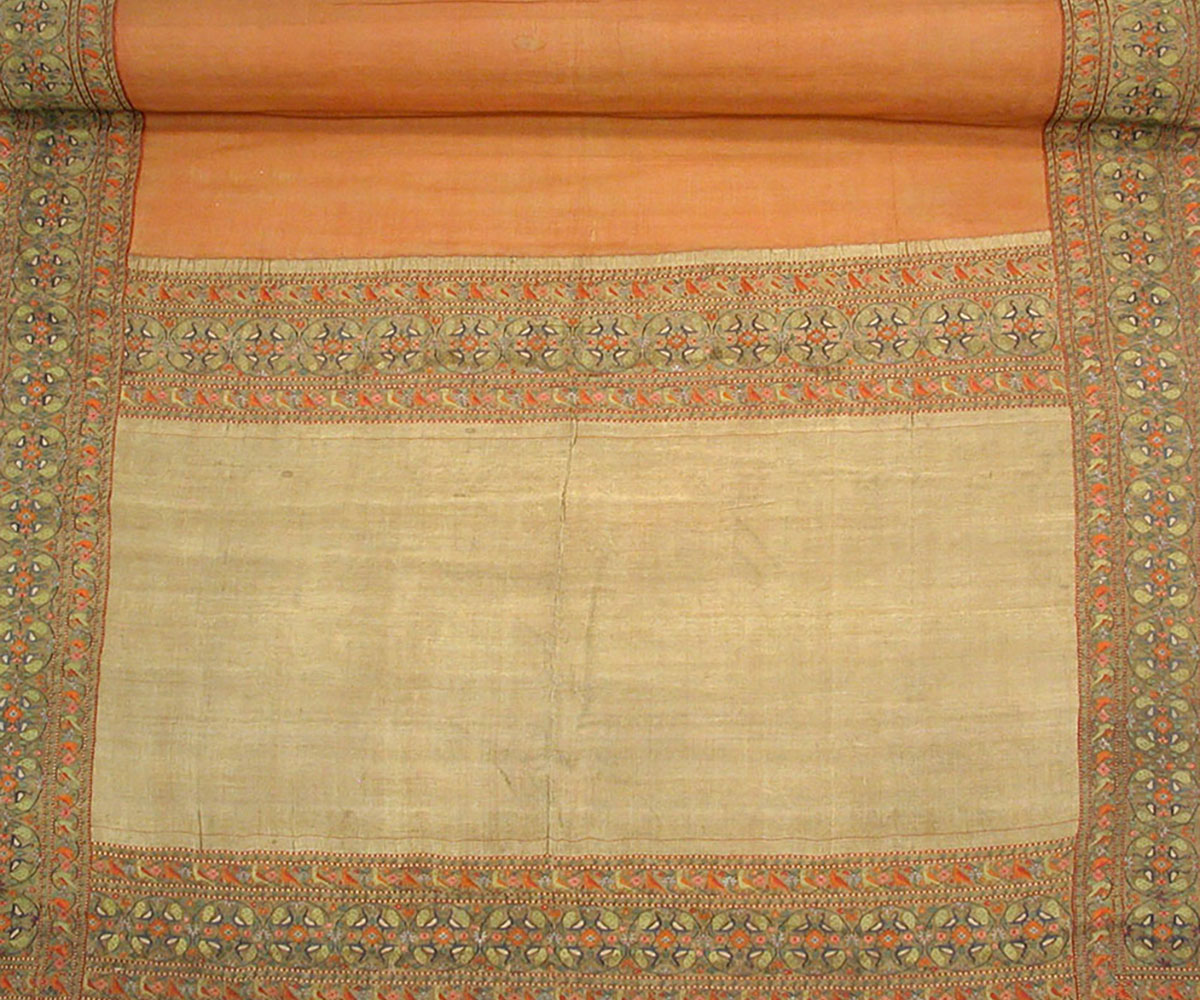ARTICLE
Chanderi
Chanderi fabric gets its name from the town of Chanderi in Ashok Nagar district, Madhya Pradesh. Chanderi is woven in silk and cotton and known for its delicate, shimmering texture and intricate brocade weave. The sarees are decorated with motifs including the single buti, the jaali, the chatai and the jangla pattern, and figures of peacocks, swans and gold coins (ashrafi). Chanderi sarees are woven on pit looms and jacquard looms, using a dobby mechanism to create interlocking threads of warp and weft, giving both strength and intricacy to the fabric and designs.
Chanderi fabric is mentioned in mythological texts such as the Mahabharata, where it is suggested the fabric was introduced by Krishna’s cousin Shishupal. In the eleventh century the town of Chanderi — strategically located between the Malwa and Bundelkhand regions — was at the centre of an arterial trade network extending to the ports of Gujarat, connecting Mewar (in present-day Rajasthan) with the Deccan and the rest of India. Other accounts state that the craft of weaving Chanderi sarees can be traced to the rule of Ala ud-Din Khalji (1296–1316 CE), Sultan of Delhi, who patronised the handloom fabric. In the Maasir-I-Alamgiri of Mughal emperor Aurangzeb (1618–1707 CE), there is mention of a cloth embroidered with gold and silver thread, used to make a ceremonial robe (khilat): this is believed to be Chanderi fabric.
It was under the patronage of the Scindia royal family that the Chanderi saree was revived in 1910; the main body was woven in muslin cotton warp and silk weft with zari work in the borders. With the introduction of Japanese silk in 1945, Chanderi was woven with silk warp and 100-count cotton weft, which became a popular blend. By the 1970s, the sarees were increasingly being woven with silk warp and cotton weft, owing to the durability of silk and the unavailability of the root needed for sizing muslin cotton. The combination of dyed silk warp with plain cotton weft led to the creation of unique pastel shades, which can be seen especially in extra weft, patterned-border Chanderi saree.
Traditionally the Chanderi fabric was woven using solely 200-count cotton yarn. The fabric was woven into pagdis (headdress), kurtas and saree, and prized for its delicate texture, making it as famous as the jamdani of Dhaka, Bangladesh. Variations on the Chanderi saree with silk warp and weft have also been woven in recent years and manufactured as luxury products.
In Chanderi, the jaala technique is still used to weave the saree, a technique that even disappeared from Benarasi looms in the early 1900s. Using the jaala technique, motifs and designs are hand-drawn and converted into a naksha for the textile: this is then seeded into a jaala that is used for creating complex patterns in the fabric. The weaving process is completed with the help of the entire family, a common practice in the villages surrounding Chanderi. Finally, zari thread from Surat or Benaras is used to embellish motifs and decorate the saree borders. A plain Chanderi saree can be woven in three days, while a saree with ornate zari work and complex patterns may take up to fifteen days to finish.
The silk and cotton yarn of a Chanderi saree are dyed separately, and the use of natural dyes produces the pastel shades characteristic of the silk warp and cotton weft blend. However, readymade dyes are preferred to create sarees in bright colours such as parrot green, turquoise, white, red and blue. The transparent nature of the Chanderi fabric is owed to the use of single flature cotton and silk yarn in the weaving process, where the natural gum of the yarn is not removed, producing a shine and transparency in the cloth.
Bibliography
Our website is currently undergoing maintenance and re-design, due to which we have had to take down some of our bibliographies. While these will be re-published shortly, you can request references for specific articles by writing to hellomapacademy@map-india.org.









